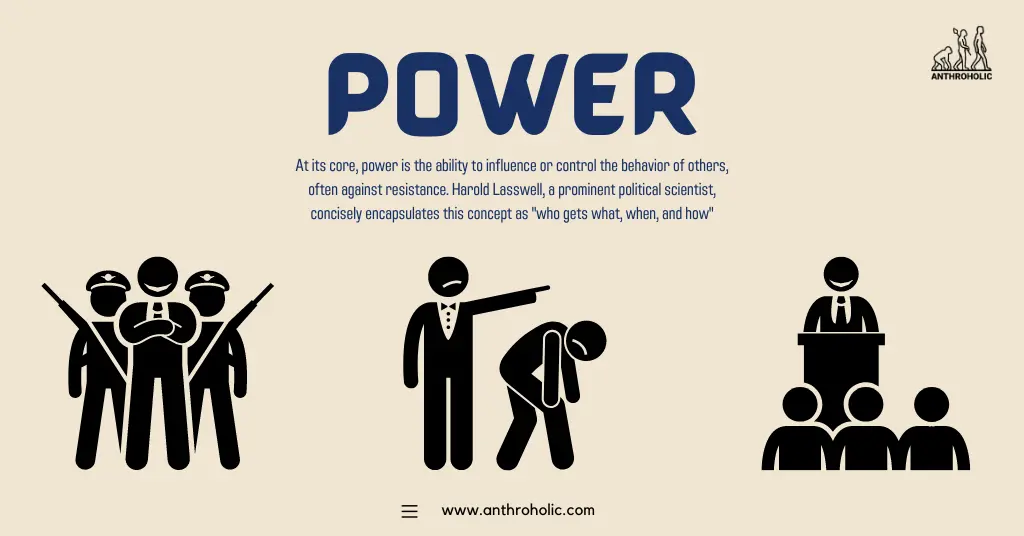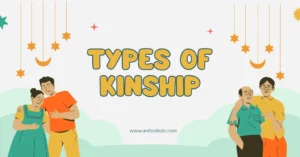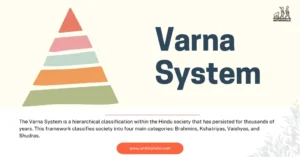AI Answer Evaluation Platform Live Now. Try Free Answer Evaluation Now
Power
Power, a pervasive phenomenon throughout human societies, is a complex and multifaceted concept. Its manifestation varies across different societies and cultures, and the interpretation is often contingent on the observer’s perspective.

Defining Power
At its core, power is the ability to influence or control the behavior of others, often against resistance. Harold Lasswell, a prominent political scientist, concisely encapsulates this concept as “who gets what, when, and how” (Lasswell, 1936).
Power can be broadly classified into three types:
- Coercive Power: Uses force or threat to influence behavior.
- Persuasive Power: Employs negotiation and persuasion to shape behavior.
- Normative Power: Leverages societal norms and values to influence individuals.
Dimensions of Power
American political sociologist, Steven Lukes, offers a three-dimensional view of power (Lukes, 1974).
| Dimension of Power | Explanation | |
|---|---|---|
| 1 | One-Dimensional | Visible power; exercised through decision-making over key issues. |
| 2 | Two-Dimensional | Covert power; exercised through control over the agenda of discussion. |
| 3 | Three-Dimensional | Latent power; exercised through the shaping of desires and perceptions. |
This categorization unveils power’s potential to influence not just through overt actions but also through covert manipulations and structural paradigms.
The Cultural Context of Power
Anthropologists underline the role of cultural context in interpreting power dynamics. Power isn’t just about physical coercion or forceful persuasion; it also involves subtle nuances shaped by cultural norms and societal values.
The Kpelle of Liberia, for instance, use ‘Sande societies’ to empower women in a dominantly patriarchal society (Bledsoe, 1980). Here, power is granted not through physical dominance or material wealth, but through cultural institutions and traditional norms.
Power in Political Structures
Power is integral in forming and functioning political structures, shaping systems from autocracies to democracies.
- In autocracies, power is often concentrated and maintained through coercion.
- In democracies, power is dispersed among citizens who exercise their power through voting.
However, it’s not always black-and-white. Democratic societies may also exhibit latent power through influencing public opinion and controlling information flow, a concept Noam Chomsky dubs as “manufacturing consent” (Chomsky, 1988).
Power and Resistance
The concept of power is inherently tied with resistance. Anthropologists like James Scott have studied how marginalized groups resist power, often through subtle, unorganized acts of defiance known as “weapons of the weak” (Scott, 1985).
Resistance can also transform power structures. For example, the Civil Rights Movement in the United States significantly reshaped the country’s power dynamics and brought forth new power relations.
The Role of Power in Social Inequalities
Power forms the underpinning for social hierarchies and inequalities. It dictates who gets access to resources, who gets to make decisions, and who gets heard in society. Disparities in power often translate to disparities in wealth, status, and opportunity.
Structural violence, a term coined by Johan Galtung (Galtung, 1969), refers to harm inflicted by inequitable social structures, often maintained through disparities in power. Recognizing these power imbalances can help in addressing systemic social inequalities.
Power and Agency
Agency, the capacity of individuals to act independently and make their own free choices, interacts profoundly with power. Foucault’s “power/knowledge” concept elucidates that power produces knowledge, and knowledge, in turn, reproduces power (Foucault, 1977). Thus, those who control knowledge can exercise power.
However, individuals, through their agency, can challenge, negotiate, or subvert existing power relations. The focus here is not just on how power restricts, but also on how it enables actions.
Power in the Age of Globalization
In the modern world, power extends beyond traditional political structures, penetrating international relations, global economies, and digital spaces.
- Global Politics: Power dynamics significantly influence international relations, shaping alliances, conflicts, and negotiations.
- Economic Power: Economic power has become a critical player in global politics. Countries like China and the USA wield considerable influence due to their economic strength.
- Digital Power: The digital age has created a new power domain. Controlling information flow in cyberspace and harnessing the power of social media are emerging as potent power mechanisms.
Conclusion: Power as a Dynamic Concept
The concept of power, seen through a political anthropologist’s lens, is dynamic and multifaceted, intricately woven into the fabric of society. It’s not just about coercion or persuasion, but also about shaping values, norms, and narratives. It’s in the realm of decision-making, in the field of resistance, and in the silent, unspoken threads that constitute a culture. Understanding power’s nuances provides invaluable insights into the structure and function of societies.
Understanding power is the first step in addressing societal inequities and forging paths towards more democratic and inclusive societies. Through its examination, we gain valuable insights into our social structures, enabling us to shape more equitable and harmonious societies. The study of power is not just an academic exercise; it’s a prerequisite for progressive change.
References:
- Bledsoe, C. (1980). Women and Marriage in Kpelle Society. Stanford University Press.
- Chomsky, N. (1988). Manufacturing Consent: The Political Economy of the Mass Media. Pantheon Books.
- Lasswell, H. (1936). Politics: Who Gets What, When, How. Whittlesey House.
- Lukes, S. (1974). Power: A Radical View. Macmillan.
- Scott, J. (1985). Weapons of the Weak: Everyday Forms of Peasant Resistance. Yale University Press.
- Foucault, M. (1977). Discipline and Punish: The Birth of the Prison. Vintage Books.
- Galtung, J. (1969). Violence, Peace, and Peace Research. Journal of Peace Research.



